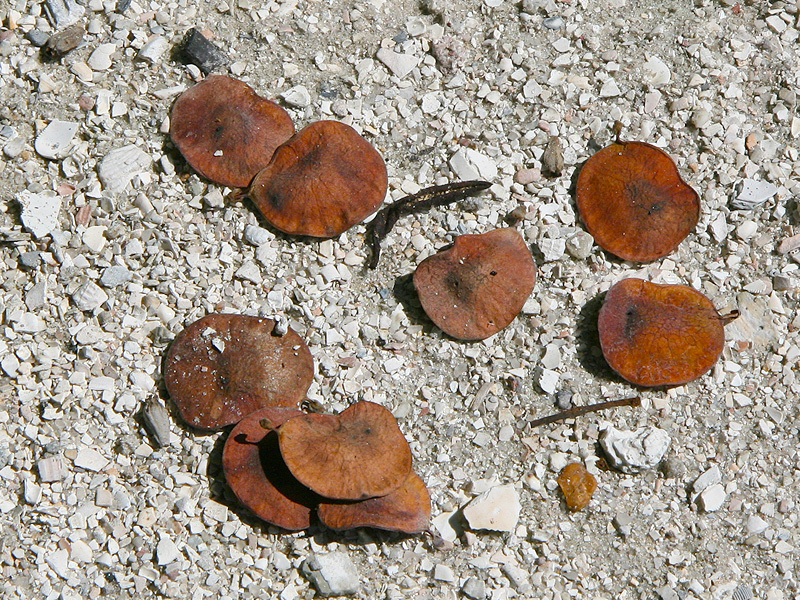
Coinvine (Dalbergia ecastaphyllum) is a very aggressive woody native vine. Its common name refers to its nickel-sized seed pods. Each one contains a single seed …
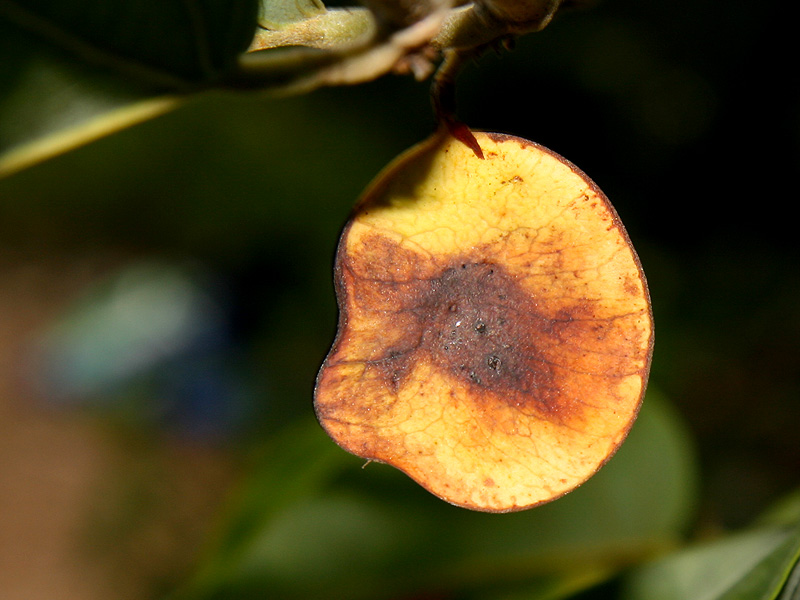
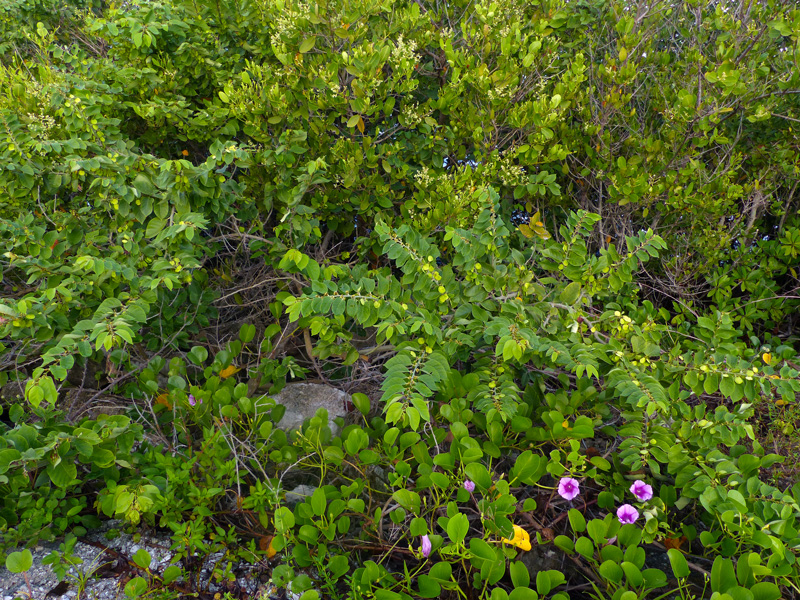
Coinvine grows on the landward edges of mangrove swamps and on sand dunes. It is pictured above on the edge of the Indian River Lagoon with white mangrove (Laguncularia racemosa) behind it and railroad vine (Ipomoea pes-capre) in front. Its range is tropical. Brevard County is its northern limit, and its range includes Mexico, the West Indies, central America, south America, and the Old World Tropics (Africa).

Its leaves are leathery with a rounded base and a pointed tip. The underside is pubescent. Each stem can sprawl for a long, long distance, up to 30′, and can root if it touches the ground. Today I cut a stem in our year that was more than 2″ in diameter. Older plants can form dense thickets or grow to be small trees in tropical locations.
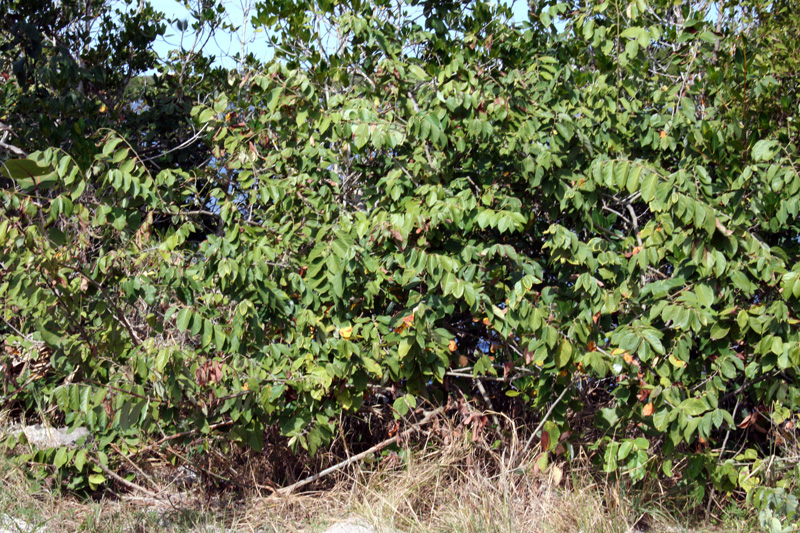

Look closely at the white flowers held in panicles in the leaf axils (angles), and you will see that this plant is a members of the pea family, Fabaceae. Like many members of this family, coinvine has nitrogen fixing root nodules that contribute to its vigor and its ability to thrive in salty and alkaline conditions.

Bees and other pollinators visit the flowers. It is considered an excellent honey plant. Flowering occurs throughout the year.
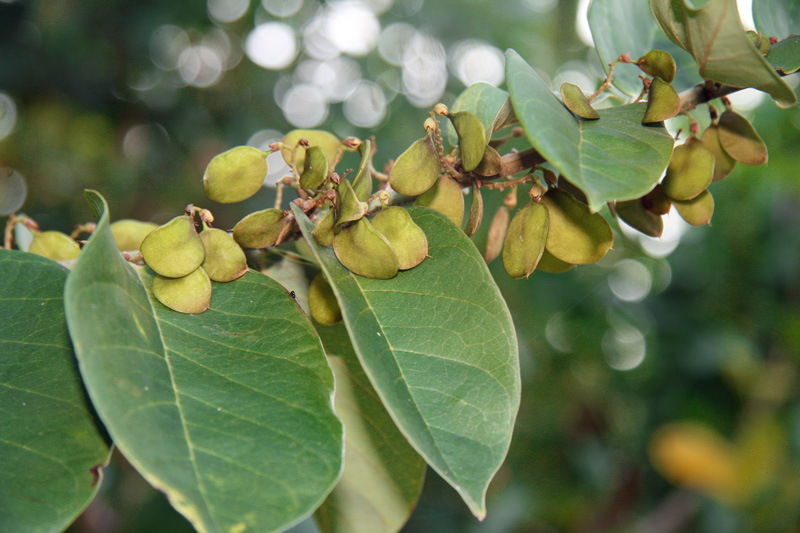
Coinvine is a larval host plant for the gray hairstreak butterfly (Strymon melinus) and the statira sulphur (Aphrissa statira) butterfly.
Fishpoison vine is another name for this plant. Aboriginal people used crushed roots and bark of this plant to stupefy fish.
